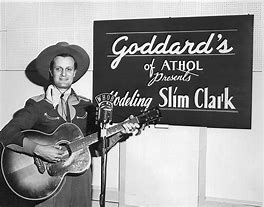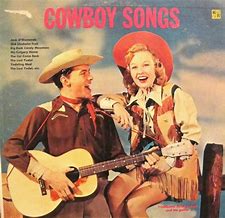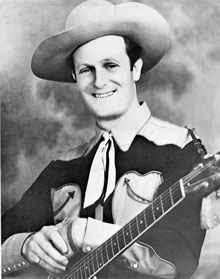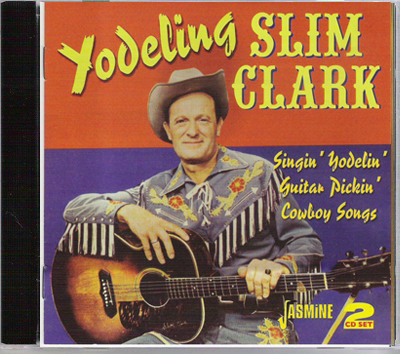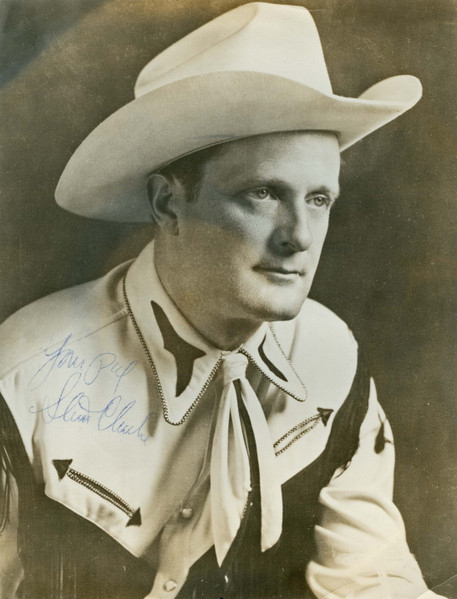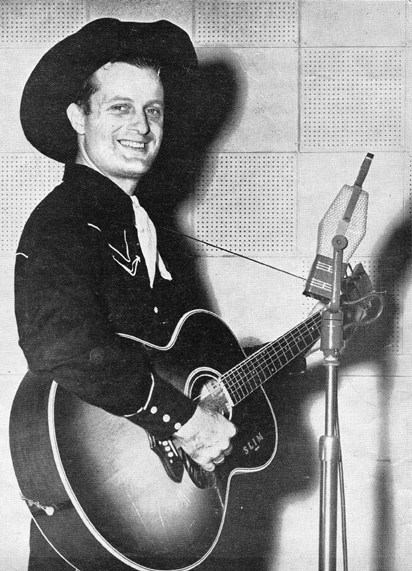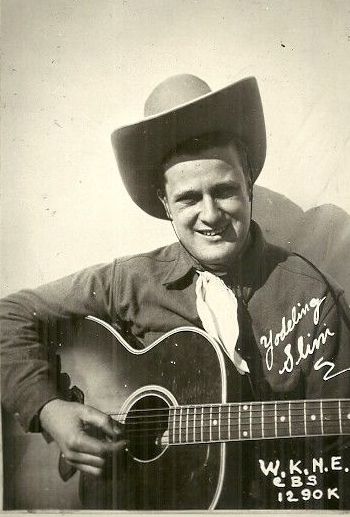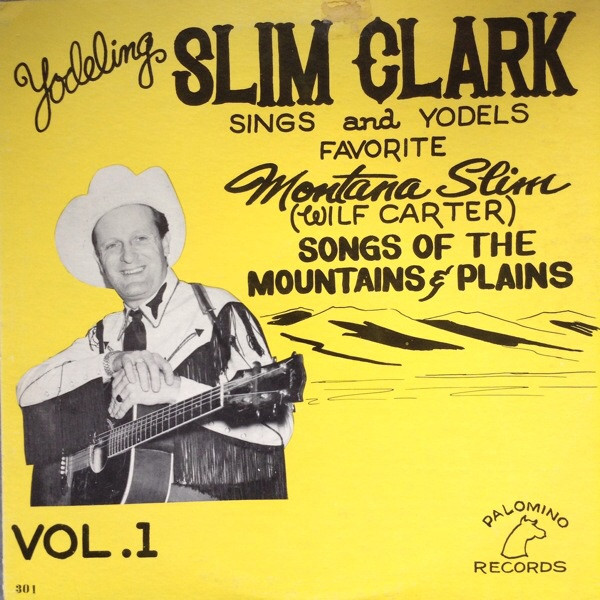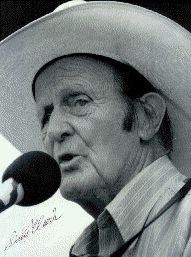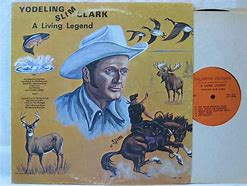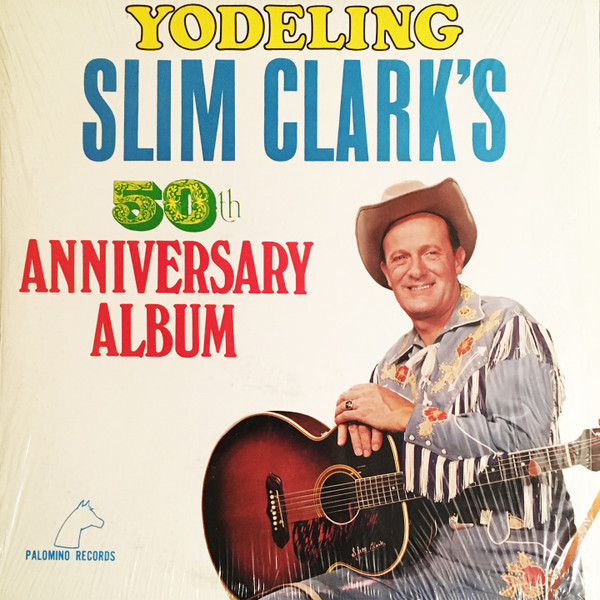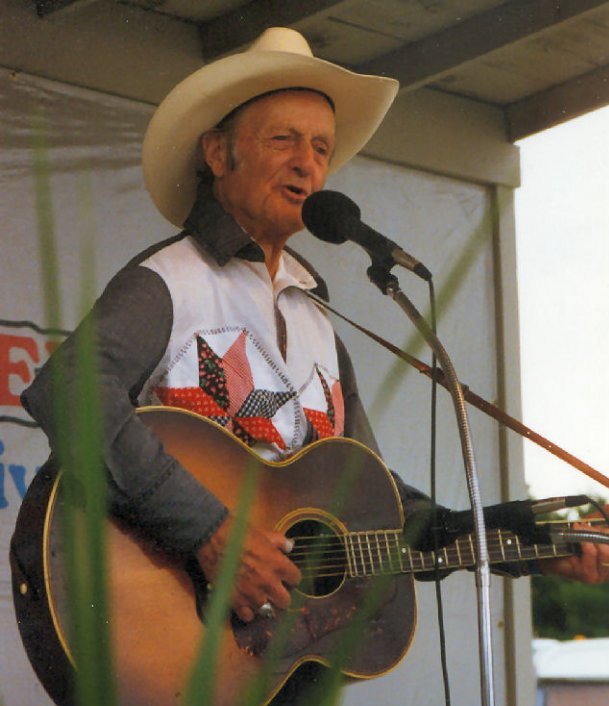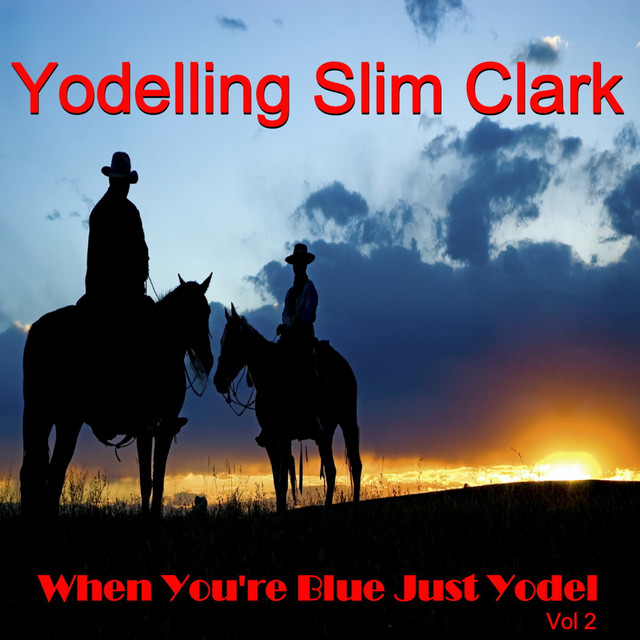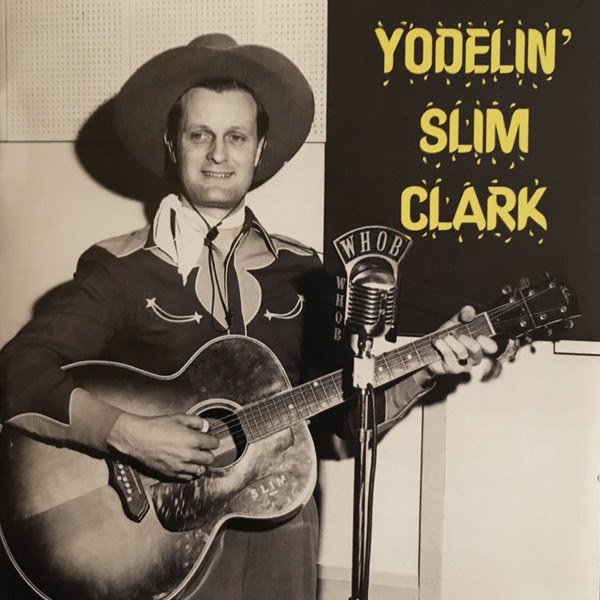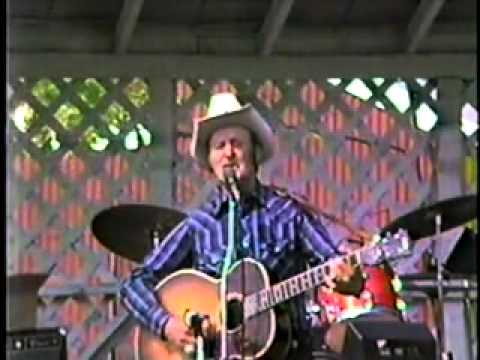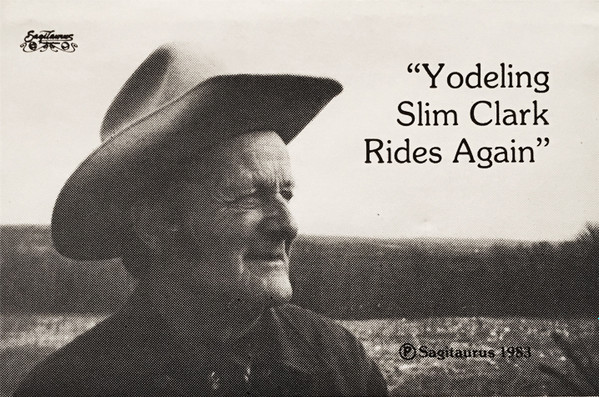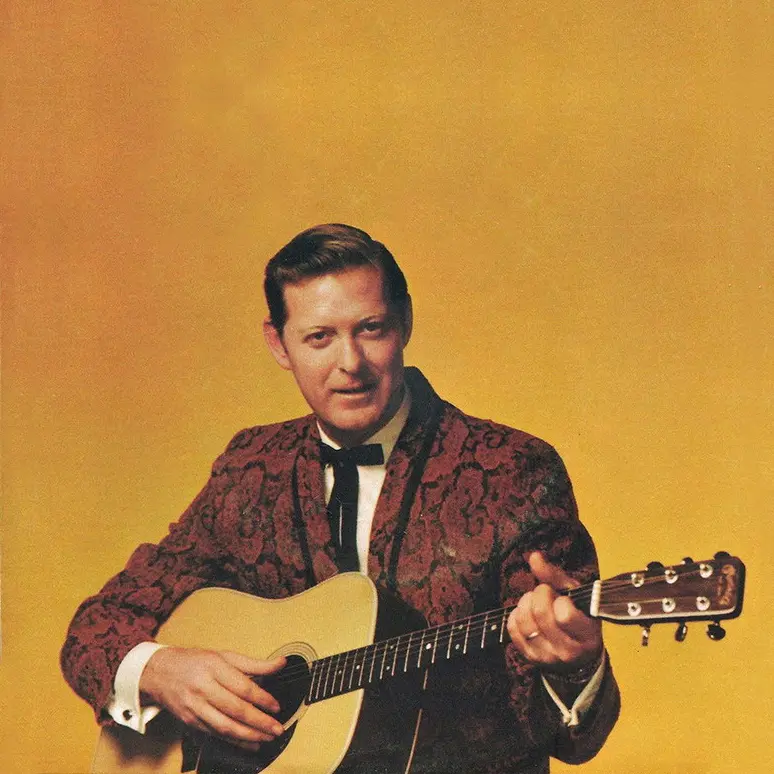Yodeling Slim Clark
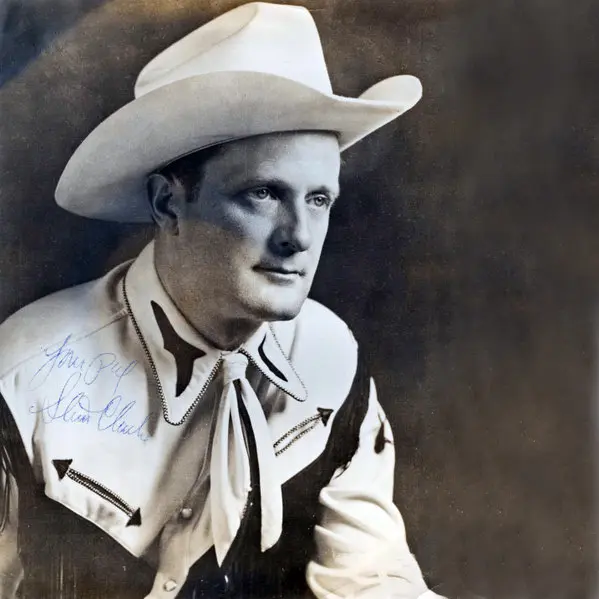
Who won the World Yodeling Championship in 1947? Ask that to anyone besides a Jeopardy! Masters champion, a Yodel Hall of Fame inductee or a country music uberfan and you’ll get a blank stare, a shoulder shrug and complete silence or a wrinkled-brow response like “Huh? Is the World Yodeling Championship really a thing? No way!”
Well, yes way. And while those familiar with the history of country music may have guessed that the winner in 1947 was Gene Autry or Roy Rogers, the prize actually went to Yodeling Slim Clark, a Springfield, Massachusetts native who lived in Maine for the most of his adult life. As silly as yodeling sounds to some, millions of others consider it to be an art akin to singing an aria or bel canto and Clark was one of those people. For nearly seven decades, he made the singing style that German immigrants introduced to America in the early 1800s his bailiwick, becoming one if its most legendary purveyors.
For the “yodeling impaired” among us who’ve never heard of Clark, consider the following: His name is on the Walkway of Stars at the Country Music Hall of Fame & Museum in Nashville; his contributions to Western art and culture are recognized in the National Cowboy & Western Heritage Museum in Oklahoma City; and he’s been inducted into the Yodel Hall of Fame, the Massachusetts Country Music Hall of Fame and the Maine Country Music Hall of Fame. Clark recorded over 50 78s, around 40 45s and more than 25 albums, becoming a household name among yodelers and yodeling fans across the US, Canada, the UK, Europe, Australia and New Zealand.
MUSICAL BEGINNINGS
Yodeling Slim Clark was born Raymond Leroy Clark on December 11, 1917, in Springfield and set his sights on becoming a country singer when he was still in elementary school, according to notes he wrote in the early 1980s (which he said gave “a little background on my life in show business and other things”). “I had an interest in cowboy music ever since I was old enough to understand what they were singing about on the old-fashioned, wind-up phonographs,” he wrote, “At the age of seven or eight, I decided I was going to be a cowboy singer. Also an artist. I said, ‘I’ll do those two things’ and believed it. So much so that I just went ahead and did them and thought that was the way it was supposed to be. And if I had to do it all over again, I would do the same things. Perhaps a little differently, but it would be basically the same.”
By the time he reached junior high, he’d spent countless hours singing along with cowboy songs on 78s that he played on his family’s Victrola, particularly ones by Charlie Blake, John White, Jimmie Rodgers and Bradley Kincaid. He began playing guitar when he was 13, learning the basic chords that he used throughout his entire career. “A fellow came by with a guitar and he showed me a few chords, just a few,” Clark wrote in his notes. “And that’s just what I play today – the same few chords. I never became much of a guitar player, but for the type of song that I do and the style that I have and the crudeness of my delivery, the way that I play is very much in line with everything else, so I’ve never bothered to become much of a guitar player. It would be just like putting white sidewall tires on a pulp truck.”
CAREER BEGINNINGS, MONTANA SLIM INFLUENCE
In 1932, 15-year-old Clark dropped out of school to start singing full time with local bands at grange halls, dances, fairs and the touring “cowboy shows” that came through Springfield, earning an impressive wage considering his age and the fact that the unemployment rate was 23%: $2/night (about $40 in 2024). He performed solo occasionally at the cowboy shows during intermissions, which provided him with a degree of local notoriety and respect as a talented up-and-comer.
After somebody mentioned to Clark that he sounded like Canadian country singer-songwriter-yodeler Wilf Carter (billed as Montana Slim in the US) – who Clark had never heard of, even though Carter was so famous that he hosted his own radio program – Carter quickly become one of Clark’s biggest musical influences. “I hadn’t heard of him because we didn’t have a radio at that time,” he wrote. “The neighbors had a radio and they told me about [Carter’s show]. I found out when he was on – in the morning around 9:00. After that, whatever I was doing, cutting wood for the family, or haying, or whatever, I would quit at that time and go listen to Montana Slim because everything he sang was exactly my idea of what the cowboy singer should be like. If there is such a thing as ‘great,’ he was the greatest of all.”
BECOMING “YODELING SLIM,” MOVE TO MAINE
By 1936, Clark was appearing regularly on WHAI in Greenfield, Massachusetts, as “Wyoming Buck,” which he changed to “Yodeling Slim” (spelled “Yodelin’ Slim” on some recordings and promo material) after a station manager said the name better reflected his singing style. In 1938, he started playing weekly on WKNW in Keene, New Hampshire, which he did through the mid-‘40s, when he began spending summers in Maine.
Clark signed with New York City-based Continental Records in 1946 after being encouraged to do so by singer-songwriter-yodeler Elton Britt, one of brightest stars in country music at the time. He recorded his first 78 that year, the Tex Ritter-penned “Rye Whiskey” (b/w “I Was Dreaming Someone Else’s Dream,” co-written by Britt). Over the next decade, Clark cut dozens of singles for the label, mostly traditional cowboy and folk tunes. He covered a number of Wilf Carter songs and co-wrote some of his biggest hits with Pete Roy, including “Calgary Stampede,” “Young Mounties’ Prayer” and “Stampede the Outlaw.”
In 1952, at age 35, Clark became a legal resident of Maine and he made the state his home for the rest of his life. From 1952 to 1967, he was the host of radio and television shows on WABI in Bangor (Maine’s first TV station) and sang with several country groups in addition to performing solo. One of the bands, The Trailriders, included Maine native Dick Curless (known as “The Tumbleweed Kid,” a nickname Clark gave him) and another, The Red River Rangers, featured Curless and Kenny Roberts of Greenfield, Massachusetts (who’s now in the Yodel Hall of Fame). In 1953, Clark cut several singles for Wheeling Records (founded by bandleader, vocalist and WWVA radio star personality Doc Williams)
PALAMINO RECORDS YEARS
After leaving Continental in 1957, Clark recorded five albums on five different labels (Paris, Remington, Palace, Altone, Arc) before signing with Bloomingdale, New Jersey-based Palamino Records in 1965. Between then and 1980, he cut 10 albums for the label, toured the US and Canada playing roadhouses, fairs, dances and rodeos, appeared on national TV multiple times and was featured in national publications including Folk Music USA.
In 1980, when his notoriety was at an all-time high, 63-year old Clark found himself fed up with the nonstop demands of the record business, particularly the coast-to-coast travel required to promote his albums. Wanting to live a simpler life, he walked away from Palamino determined to concentrate on his non-musical passions – painting, hunting, fishing (all of which he’d done since childhood) – and to record and perform only when he chose to do so (mostly, if not only, in New England). He recorded his final album, Yodeling Slim Clark Rides Again, in 1983 on the Sagitaurus label.
“New York City was, at that time, the center of music, as Nashville is now,” he wrote in his notes. “I had all kinds of chances to be up there on the top shelf, but it required staying and living in the big city, playing clubs, meeting with people all the time and I was too much of a country boy to stand for that. I was brought up in the country and hunting and fishing were my life. I decided I’d rather be a big toad in a small puddle and came back to New England.“
FESTIVALS, PAINTING, DEATH, LEGACY
In the ‘80s and ‘90s, the semi-retired Clark was a frequent presence at festivals in New England and occasionally appeared at ones in other states; he referred to them as “a kind of rebirth for me” in his notes. “Besides my recording, the festivals have made me more popular than I ever was before,” he wrote. “I love to do the shows and I love to meet the people, but I hate to do the traveling and everything in connection with going to and from, and also the hanging around waiting for the shows. Those things tire and bore me when I could be fishing or playing golf.”
Following his departure from Palamino, he focused mainly on painting and he was widely recognized for his lifelike portraits of woodland scenes, wildlife and rural activities. One of his best-known paintings is of a Lombard steam log hauler, a groundbreaking vehicle that was first built in Waterville, Maine, and first used in Eustice, Maine (in 1901). Today, the majority of New Englanders are far more familiar with Clark’s artwork than they are with his music.
Yodeling Slim Clark died on July 5, 2000, at age 82 in Pittsfield, Maine, and was buried at St. Albans Village Cemetery in St. Albans, Maine. In his notes from the ‘80s, he made it very clear that he was never interested in being “the greatest” singer, guitarist, performer or songwriter – “that doesn’t make any difference to me,” as he put it – and that his three main goals were to bring happiness, be well-respected and be well-remembered. “If I have made people happy with my music, that is exactly what my aim was,” he wrote. To that, yodelers and yodeling fans from across the globe would say, with the deepest respect they could muster, “Mission accomplished, Mr. Clark, and thank you.”
(by D.S. Monahan)

